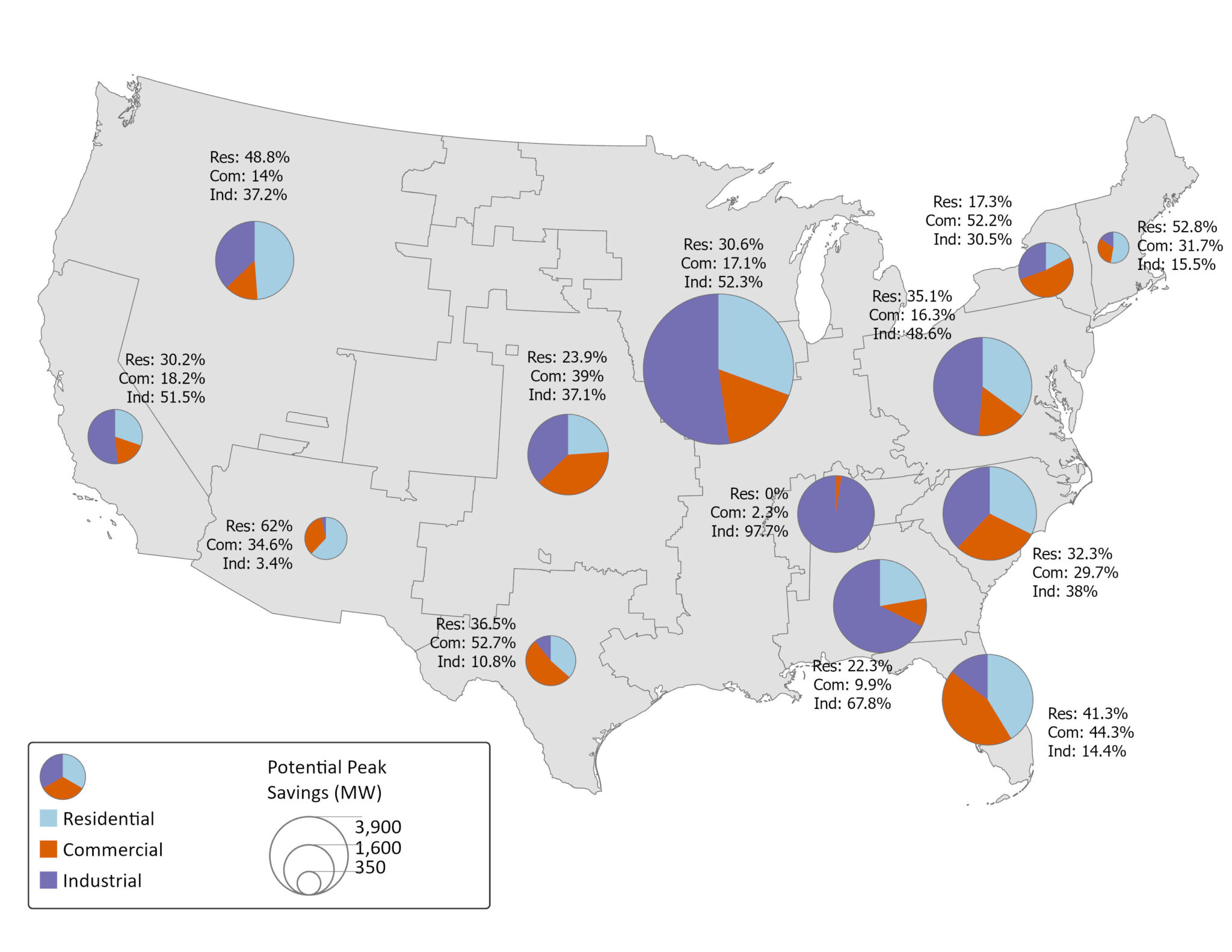November Map of the Month

By Will Bryan

It’s no secret that projected electric loads throughout the nation are unprecedented, but particularly in the Southeast. A recent analysis by ICF estimates that U.S. electricity demand will grow by 25% in the next four years, and 78% by 2050, compared to a 2023 baseline. Much of this load growth will happen in the Southeast, driven by a combination of electrification and the siting of large commercial customers.
Many electric utilities are considering building new generation to manage this unprecedented growth; load flexibility, however, will be a critical tool to maintain grid stability, promote customer affordability, reduce the environmental impacts of generation, and ensure that we have the energy to meet all our needs.
This month’s map uses data from the U.S. Energy Information Administration (EIA) to explore the state of utility-administered demand response programs in 2024, the most recent year data was available. Demand response refers to a range of programs that are designed to reduce customer usage during peak events, including through the installation of smart thermostats or variable pricing, among others.
Utilities of all types have enrolled 2.7 million residential, commercial, and industrial customers in demand response programs across the South. These programs have created the capacity to save approximately 13.34 GW of peak energy use. In 2024, demand response reduced the peak demand by 2.89 GW, the amount of power generated by about three nuclear reactors. Utilities in the Midwest, mid-Atlantic, Carolinas, and Southeast balancing authority regions lead the nation in terms of potential peak capacity reductions available through demand response programs.
As the pie charts in this month’s map show, utilities take different approaches to balancing their programs across multiple sectors. While peak savings in the Southern and Tennessee balancing authority regions are driven largely by the industrial sectors (seen in purple on the pie chart), other parts of the South, such as Florida and the Carolinas, show a greater reliance on residential and commercial demand response approaches.
Demand response is transformational work. It stabilizes the grid during critical events and protects customers from the costs of new infrastructure investment. However, to meet future load projections, these programs must be scaled up rapidly to help meet the projected need.
Expanding demand response offers additional peak-shaving capability, especially when paired with energy efficiency and other distributed energy resources. Demand response is a proven, effective tool. The challenge now is to scale it to meet the emerging demand.

